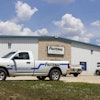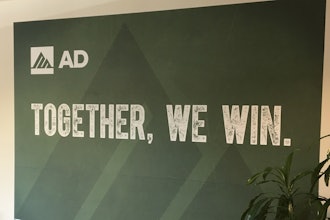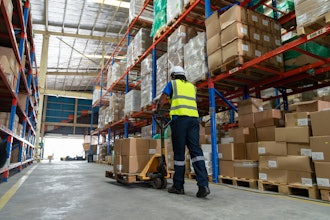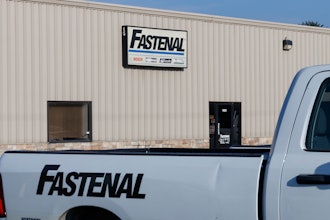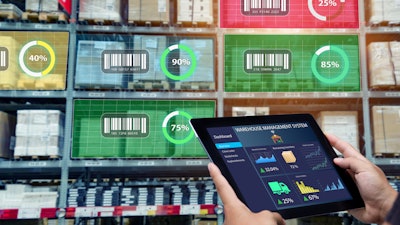
In July 2021, the McKinsey Global Institute, a business and economics research firm, published a research paper titled Responding to Inflation and Volatility: Time for Procurement to Lead. The paper discusses how inflation, in mid-2021, was pegged at 5.4 percent. And some items, like lumber and steel, were up by much more than that since 2020; more than 75 percent for lumber and 200 percent for steel.
Further, they surveyed dozens of experts in four industries – automotive, pharmaceuticals, aerospace and electronics – and found that the respondents expected supply interruptions lasting a month or longer to occur every 3.7 years.
Well, it appears their study was published about a year too soon. Today, the inflation rate is closer to 10 percent. According to some estimates, lumber prices have increased by 400 percent. Steel prices have gone up 219 percent since January 1, 2020. And supply interruptions due to persistent parts and labor shortages are expected to continue for years, especially in specific industries such as electronics and tech hardware. The 3.7-year cycle mentioned in the paper has also been tossed out the window.
Along with product shortages, the most pressing challenge right now is inflation. This tells us distributors and their customers have entered a totally unexpected world. Not only is it unpredictable, but few manufacturers, distributors or end customers are prepared for it.
While there have been signs recently that inflation is coming down, it could take years for prices to come down to pre-pandemic levels and they may never fully recover.
Realizing this is our situation, distributors are now in a tricky situation. They are dealing with price increases like everyone else, including their customers. What can they do to mitigate some of these cost increases to make things easier for their clients and, more importantly, hold on to their clients during this troubling time?
Here are four suggestions which can help distributors in many industries:
Create a Supply Chain Nerve Center
The purpose of a supply chain nerve center is to monitor situations around the world that can interrupt supplies and, as is usually the case, result in price increases.
Most large organizations already have such nerve centers in place. They are made up of in-house procurement specialists and operations and finance managers. The entire process is designed to deal with uncertainty and manage inflationary pressure.
But smaller organizations are not equipped to create complex nerve centers. They often depend on their distributors to do the research for them, stay on top of supply fluctuations, and suggest strategies to ensure supplies are available and mitigate rising costs — at least as much as possible.
Conduct a Product Audit
To better understand what a product audit is, let’s take a look at the professional cleaning industry. Depending on the source, the professional cleaning industry has a market size of anywhere from $200 billion to more than $400 billion. It employs 4 million people.
What is quite common in this industry is that procurement is put on “autopilot.” The same products are purchased over and over again without much thought being put into the purchases. This may go on for years. A product audit is designed to do several things, such as:
- Provide a complete, objective view of the products currently being purchased.
- Eliminate duplicate products that are used for the same or similar purpose, e.g., assorted brands all used as all-purpose cleaners. Very often, this step alone puts an end to the autopilot procurement program.
- Evaluate currently used products to discover those that are proving the most effective and cost-effective.
- Investigate new products that may outperform and be more cost-effective than those currently in use.
- And in today’s world, determine which products may experience supply interruptions so they can be avoided, at least at this time.
Reconsider Product Bundling Programs
Product bundling is an old strategy, often used in the B2C world but becoming more common in the B2B world. It’s when several products are bundled together and sold at a single unit price. For the distributor, it can help decrease packaging, transport and marketing costs. For the customer, purchasing more bundles of products can often result in cost savings — if they purchase enough bundles. Instead of requiring the customer to purchase, for instance, 10 bundles to receive a discount, distributors may now want to bring that down to seven or eight bundles. The savings will be appreciated.
The End of Quarterly Briefings
Before the pandemic, it was common for many distributors to have quarterly briefings with their clients. These meetings, scheduled every three months, allowed distributors and customers to review product needs and see if new products have been introduced that might better serve those needs. Quarterly briefings were fine in the old days when inflation was minimal and supply interruptions were nil. Now, distributors must meet with their customers monthly. Meeting monthly allows distributors and their customers to change direction quickly to avoid cost increases and supply interruptions.
Focus on the Goals
The key goals of these suggestions are to help the customer better grapple with inflation and product interruptions and to help the distributor maintain their client base. But something bigger is going on. The door has now been opened for distributors to become procurement leaders. They now have a broader mandate to help their clients be more resilient, deal with volatility, and collaborate more closely with them. In today’s world, distributor leaders are needed more than ever.
Michael Wilson is senior vice president of marketing and packaging for AFFLINK.



